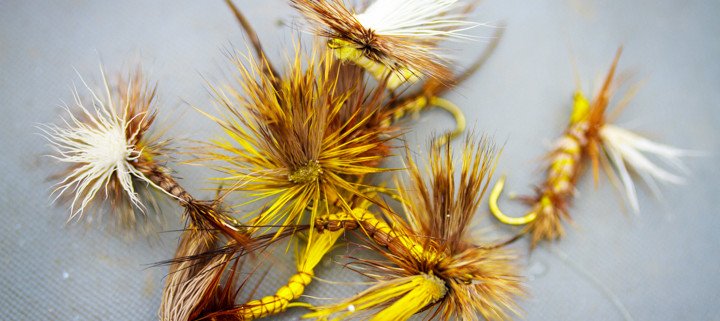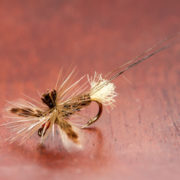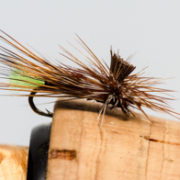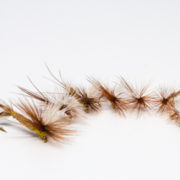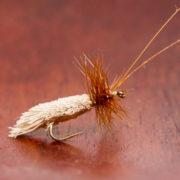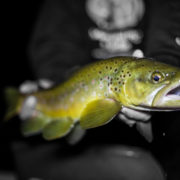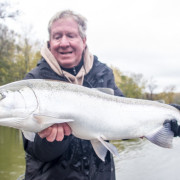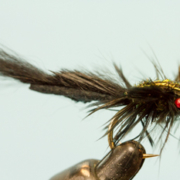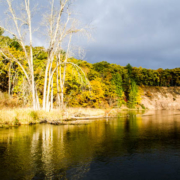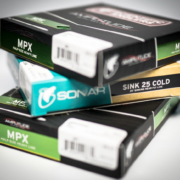Fly Patterns for Michigan Hatches
Fly Patterns for Michigan Hatches
I remember way back (45 years ago) when I was learning to fly fish out west, the most intimidating facet of the sport was bugs. Pale Morning Duns, Blue Wing Olive, Green Drakes, I had no idea what these were or how to proceed in learning more.
Fast forward 35 years. One night during Hex and Brown Drake (the big bugs) season my son, Zach, was wade fishing while I was on the water, working. When all the guides and customers gathered in a friend’s garage Zach was showing a picture of a nice brown that he landed that night. A customer of one of the other guides asked Zach “how did you know what fly to use”? Watching from across the room I wanted to make sure that Zach was polite and respectful. He said to the angler “ just a moment sir, I’ll be right back”. Minutes later he returned with his fly box, opened it and told the angler “I catch the bug that the fish are eating, set it in my fly box and pick the bug that looks like the natural”! At 10 years old he had that figured out.
Fly Selection
In Michigan fly selection is pretty simple if you have some basic information. The goal of this blog post is to give you that information. I want to help you simplify, reduce cost and avoid the junk! You don’t need to know the name, habitat or the imitation. You can just compare the real bug to the ones in your box. If you populate your fly box with the imitations I recommend below most of the time you will have the imitation needed to fool the trout.
First let’s list the major hatches that you are most likely to encounter. Understand that there are a lot more bugs that you may run into but this list is the bugs that you will encounter most of the time.
Major Fly Hatches
These major hatches are Hendricksons, Black Caddis, Sulphurs (2 sizes), Cahills, Mahoganies, Isonychias, Grey Drakes, Brown Drakes and Hexes. Without going into bug habitat, hatch timing and life cycles let me give you the easiest, simplest way to be prepared for these hatches. The simplicity comes from purchasing or tying the correct flies.Then carrying them so that you can compare them to the natural and having the correct fly to match the hatch!
The flies that all Michigan anglers should have with them at all time are the following…..
A Hendrickson dun and spinner pattern, the female after mating has a prominent yellow egg sack. Make sure you fly does too.
A Black Caddis Adult and Egg Laying fly. The female Black Caddis has a very visible chartreuse egg sack, make sure your imitation does
as well.
Carry Robert’s Yellow Drakes in every size from 18 to 4. This Michigan pattern, in different sizes, is a great imitation for Sulphurs, Cahills, Brown Drakes, Yellow Sallies and Hexes.
Adams, in size 10 and 12, is a great Gray Drake and Isonychias Dun imitation. This is a fly that was invented on the Boardman and is considered by many to be the very best dry fly in existence.
Another Michigan fly pattern, the Borcher should be available to you in size 10, 12, 14 and 16. It is a great imitation for a variety of insects like the Isonychia spinner and Mahogonies.
The above list will cover most of the hatches that you are likely to come across but it is not a complete list. If you want to get a little more sophisticated I’d add the following flies to my arsenal.
Many of our stoneflies can be successfully imitated with a fly called the Mattress Thrasher. Carry that fly in sizes 4 to 8
If you are a gluten for punishment, Tricos in size 18, 20, and 22
Blue Wing Olives can produce rises at times. Carry imitations in size 12-16
A Guide Trick
In addition to the imitations I’ve listed there is another little trick to help you successfully fool trout. Carry
Adams, Stimulators and Goddard Caddis flies in size 12 to 18. Take a black permanent waterproof marker with you. Use the marker to change the flies to black. Then present the same size as the naturals to the fish. Usually they will eat it!
Hopefully you will frequent your local fly shop. Use their expertise to help you pick these patterns. Supporting your local fly shop will assure you that you will have a local support system as you delve further into this terrific sport.
Hatch Guide
We are lucky to have a great reference book, Guide to Upper Midwest Fly Hatches, Ann Miller is the author. Ann has written a great reference book for our hatches describing both the bugs, life stages and fishing methods.
Take care of your flies by drying them before storage. If you do they will last until you wear them out (preferable) or lose them with errant casts!
Use this information to simplify your fly box and as an aid in your pursuit of fly fishing knowledge. You don’t need to know the names of bugs or flies, the life cycle or the nuances of the hatch. All you need to do is remember what my son did, catch the natural and compare it to the flies from this list, pick the one that is the same size and color, tie it on and go get em!
Good luck, have fun!
Capt. Chuck Hawkins

